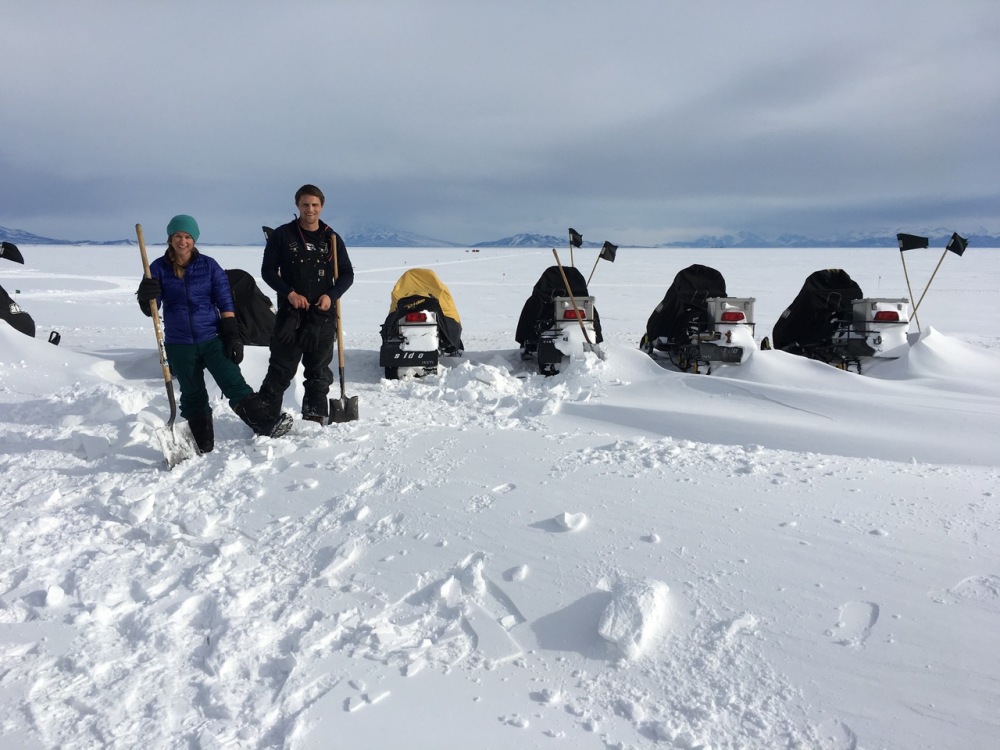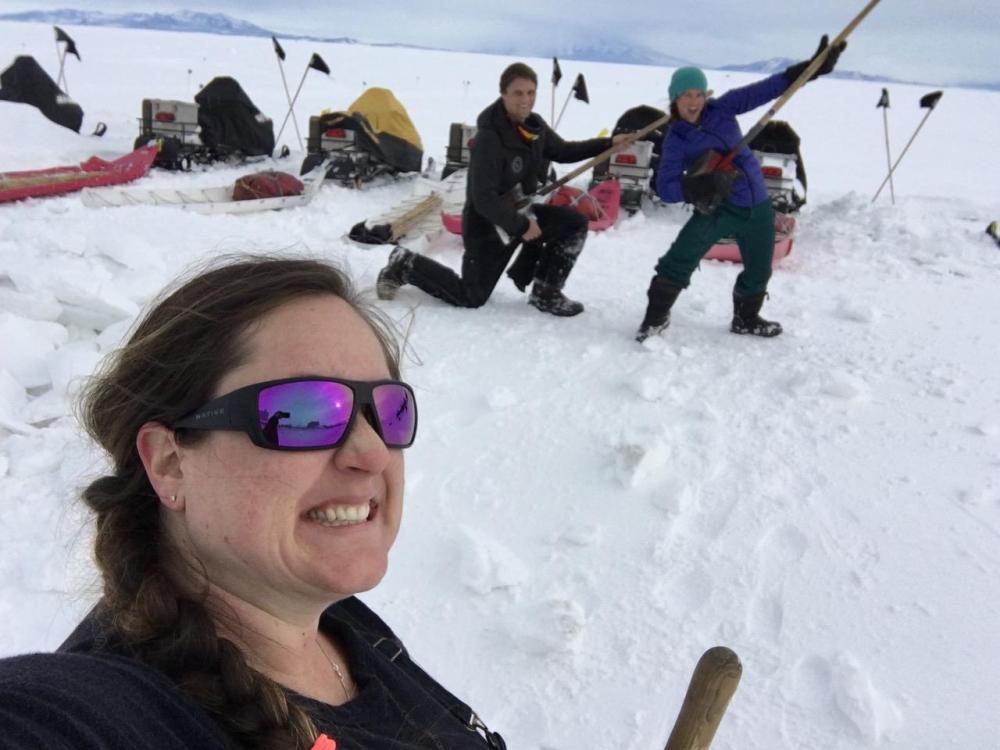With the weather clearing up faster than expected, on Saturday morning we were able to do our first Icefin dive of the 2018 season! We decided to stay close to base, and were fortunate to be given access to the fish hut of Paul A. Cziko and Arthur L. DeVries. Their talented group of scientists, divers, and technicians maintains the McMurdo Oceanographic Observatory (MOO) which constantly streams HD video and ocean conditions from 21m below the ice: http://moo-antarctica.net/


We packed our gear into our PistenBully in the morning and hauled it to the fish hut in two trips. When we deploy in our own fish hut, we can leave a lot of equipment in there, like our generator (heavy!) and our winch (so heavy!), eliminating the need for multiple trips. With the computers set up and the robot assembled, pilot and co-pilot Chad and Dan, respectively, took us through the initialization procedure. Then it takes about 4 people to gently (read: awkwardly) lower Icefin into the hole. Deploying Icefin outside the fish hut is a much more smooth operation: we use an A-frame ladder and pulley to hoist the robot over its hole. But the fish hut is a nice, warm shelter, which reduces the stress of a first dive.

Driving a robot underwater is a complicated endeavor. Frances and Andy manned the winch and sensitive fibre optic tether, Britney ran the show as mission commander, Matt was on communications, and Justin served as science officer. My job was to use the fish camera to provide a third-person perspective of Icefin (#teamgopher). We use the fish camera to watch the vehicle under the ice to confirm that the sensors are providing accurate information about the robot’s position and orientation. First things first, the engineers wanted to ensure that Icefin has neutral buoyancy in the water – meaning it neither floats nor sinks. This is critical for navigability and efficiency. Next, some of Icefin’s autonomy features were tested: asking the robot to stay at constant depth, constant pitch, or a constant position. Our lead electrical engineer, Dan, helped tune the controllers to optimize these features.

With those tests successful, we moved onto autonomous driving. A glitch in the power system momentarily paused the mission, but with plenty of data we can now get down to guaranteeing reliability. This iteration is a big part of any scientific or engineering work – particularly when developing new technologies. Using the data we gathered during the several hours of under ice operations, we’ll be able to improve power system and thruster function, eliminating a few pesky glitches and streamlining the vehicle for much longer science runs that will begin this week. All in all, a successful first dive.


We should be back in the water tomorrow, and this time in our own fish hut near Scott Base and the McMurdo Ice Shelf. The group will travel by snowmobile and PistenBully for the roughly 40 minute commute. Given the recent snow (isn’t it supposed to be a desert!!?), yesterday involved a little Antarctic Crossfit. Start with a 30 minute warm up of trying to secure 10-12 foot sleds in the bed of a jacked up pickup truck on an icy hill, followed by a 90 minute session of digging snowmobiles out from drifted snow at the edge of the sea ice without piling it up in the way of any of the other machines. You can’t see abs through Carhartt coveralls, but I promise I have a 6 pack now. #thisisntfieldwork #itsafieldworkout.


Reblogged this on Planetary Habitability & Technology and commented:
Icefin goes under for the first time in 2018!
LikeLike